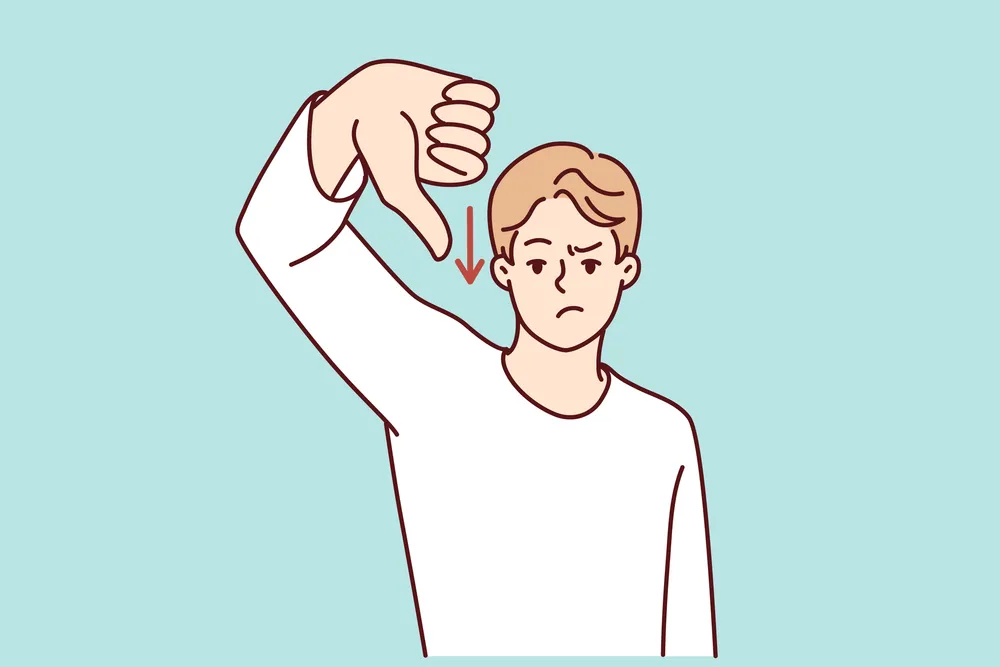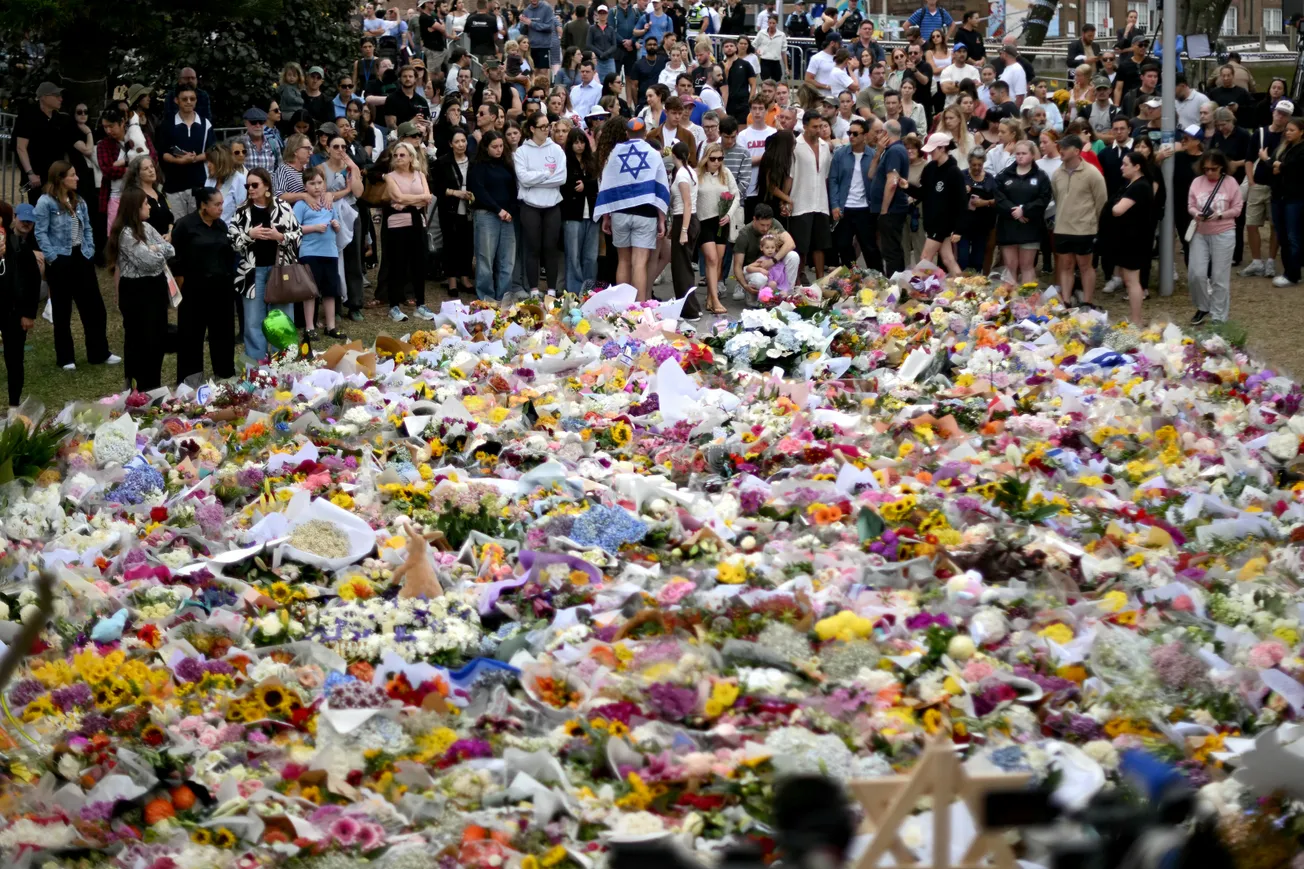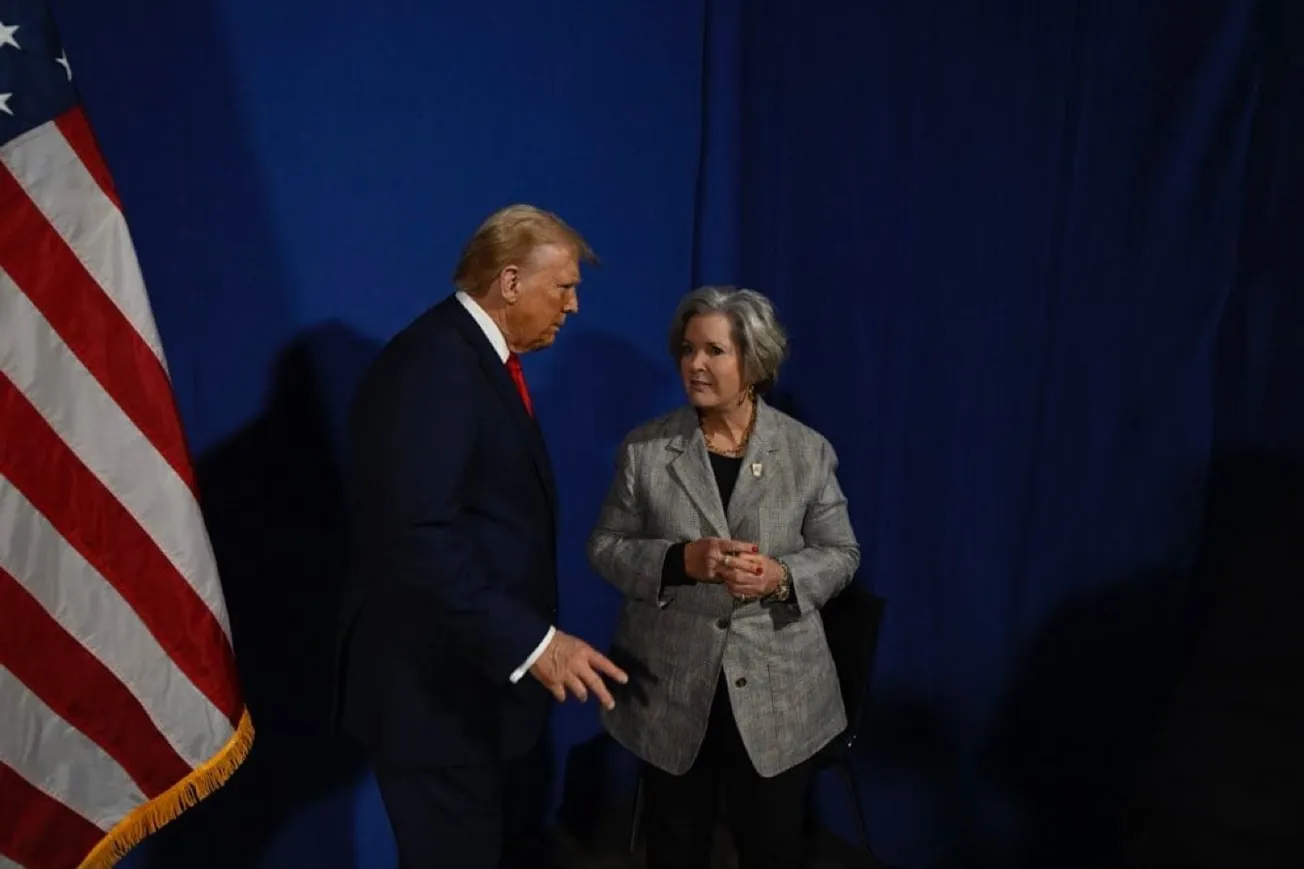As nearly all parts of the political spectrum agree, average Americans are extremely unhappy these days. The latest I&I/TIPP Poll shows that a hefty majority sees the federal government’s recent performance as the cause of their disgruntlement.
With news stories regularly highlighting widespread anger among voters, we asked the following question for our December national online poll, taken from Nov. 29-Dec. 1 by 1,464 adult registered voters: “Which of the following best describes how you feel about the federal government?”
Respondents were then given four possible responses: “satisfied,” “frustrated,” “angry,” and “not sure.”
“Satisfied” never had a chance. Overall, just 14% said they were satisfied with Washington. A shocking 55% called themselves frustrated, and another 23% said they were angry, for a total of 78% of all responses.
Another 9% responded that they were not sure. The poll has a +/-2.6 percentage-point margin of error.
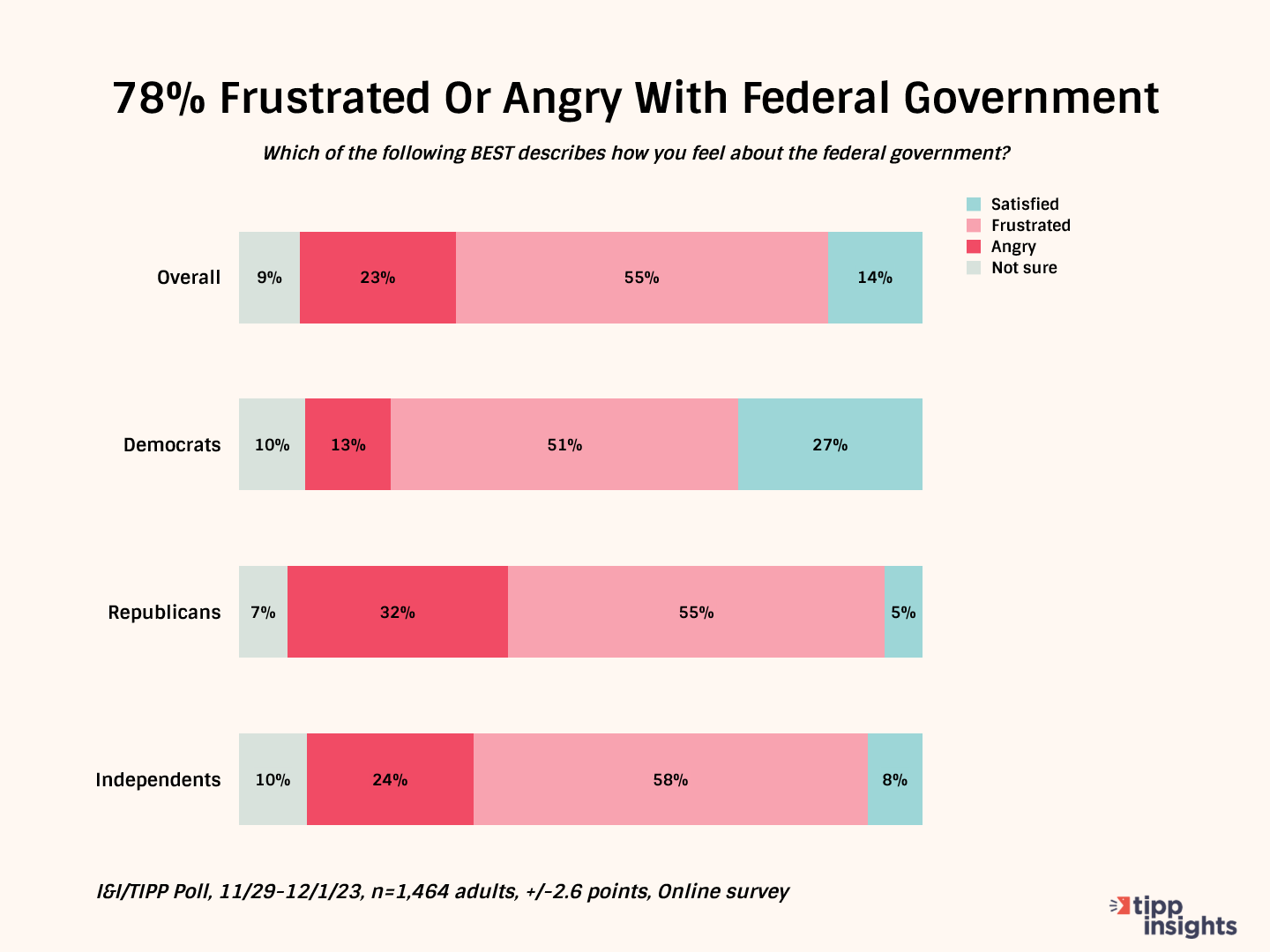
With so much anger and frustration, 2024 shapes up as a bad year for any politician identified as a Washington insider.
Even Democrats, whose party has controlled both the White House and one or both chambers of Congress throughout President Joe Biden’s term, show deep discontent.
While 27% of Democrats call themselves satisfied, just 5% of Republicans and 8% of independents do. But Democrats aren’t Pollyannas, exactly: 51% say they’re frustrated and 13% call themselves angry, compared to Republicans (55% frustrated, 32% angry) and independents (58% frustrated, 24% angry).
Indeed, among all 36 of the I&I/TIPP Poll’s demographic categories, just urban dwellers (47%) and Hispanics (46%) were below 50%. A majority of all the other groups claimed frustration with the federal government’s performance.
In a follow-on question, I&I/TIPP asked respondents which would they prefer: “A smaller government providing fewer services,” or “A bigger government providing more services,” or “not sure.”
Overall, 38% chose the “smaller government, fewer services” option vs. 40% who picked the “bigger government, more services” option. With the poll’s +/-2.6 percentage-point margin of error, it’s a statistical dead heat.
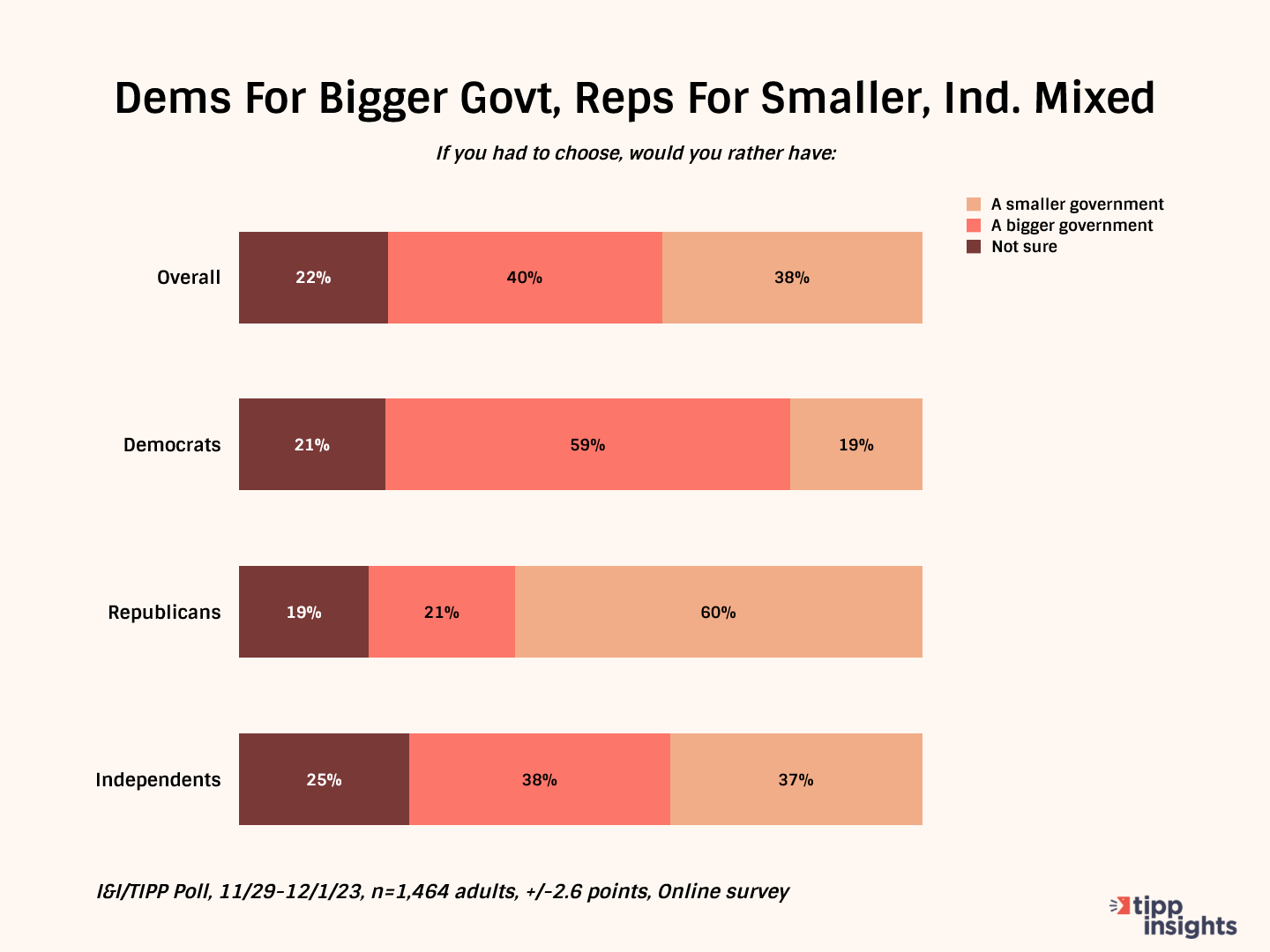
But that’s deceptive, since responses by political affiliation showed just how far apart Americans are in their views of the role of government in their lives.
Among Democrats, only 19% say they would like a smaller government with fewer services, while for Republicans it’s 60% and for independents 37%. The breakdown for the opposite, bigger government with more services, is 59% for Democrats, 21% for Republicans and 38% for independents.
So the apparent overall accord on big government vs. small government falls apart when you look at political affiliation. Democrats are still the party of big government, Republicans are still the party of small(er) government, and independents are somewhere in between.
But there are other differences in the data.
Younger Americans tend to favor big government, with 18-24 year-olds (30% “small government,” 48% “bigger government”) and 25-44 year olds (28% “smaller government,” 51% “bigger government”) clearly in the bigger-is-better camp.
Meanwhile, older Americans think less is more, with those 45-64 (41% “smaller government,” 36% “bigger government”) and those 65 and older (53% “small government,” 26% “bigger government”) expressing doubt over big government’s efficacy.
Race is another point of difference. White voters mostly want smaller government (44% “smaller government,” 38% “bigger government”), but black/Hispanic voters (25% “smaller government,” 53% “bigger government”) remain comfortable with the expanding presence of government.
So the average across all groups is once again deceptive when it comes to looking at the individual parts. The big question is, what does all this mean for 2024’s U.S. elections, in particular the presidency?
Biden has, at least theoretically, pushed all the buttons for Democrats by launching large, national programs on a scale not seen since the New Deal.
As the British-based Financial Times noted in 2021, after Congress passed Biden’s $1.9 trillion stimulus bill:
It (stimulus) cements a leftward shift in U.S .politics and economics that has gained traction during the coronavirus crisis, affording government a far bigger role in solving problems in society than it has enjoyed in recent decades. … (along with COVID vaccinations) this burst of government activism carries echoes of Franklin Delano Roosevelt’s New Deal during the Depression, and Lyndon Johnson’s Great Society reforms of the 1960s.
Americans largely supported the Biden administration’s early moves during the COVID lockdowns.
“The latest update shows that 54% of Americans say the government should do more to solve our country’s problems, while 41% say the government is trying to do too many things that should be left to individuals and businesses,” Frank Newport of the Gallup Poll wrote in March 2021.
But that was before inflation exploded, topping 8% in 2022, with Americans struggling to keep up as interest rates soared and federal debt payments spiked from a little more than $500 billion a year in 2021 to the current level of nearly $1 trillion a year.
The COVID lockdowns decimated small businesses and turned many working Americans into virtual shut-ins, with many leaving the workforce altogether. “Right now, the latest data shows that we have 9.5 million job openings in the U.S., but only 6.5 million unemployed workers,” the U.S. Chamber of Commerce recently noted.
So skepticism over big government seems, if anything, to be growing, especially outside of the Democratic Party’s ranks.
As this month’s I&I/TIPP presidential polling for 2024 shows, Donald Trump leads Biden in voter preference, and he also commands a substantial double-digit lead over all his Republican competitors in the upcoming primaries.
Though not a majority, a significant share of Democrats — one in five, according to I&I/TIPP data detailed above — want smaller government and less spending. And only half of all Democrats say they’re better off now than four years ago.
How many of the Democrats who are not better off or who seek smaller government would be willing to vote for Trump? A lot, it seems, perhaps enough even to tip an election.
“In a trend last seen when former President Ronald Reagan pulled disgruntled blue collar workers from the Democratic base in 1980 and 1984, some voters who backed Biden in 2020 are shifting to Trump due to concerns the economy will worsen if a change in Washington isn’t made soon,” wrote the Washington Examiner’s Paul Bedard.
As evidence, Bedard cites a recent McLaughlin & Associates poll showing significant inroads made by Trump within the Democratic Party, in particular among black, Hispanic and young voters. McLauglin suggests as many as 5% of Biden’s Democratic voters in 2020 could defect to Trump this time around.
Could this be another Reagan-style electoral tipping point? If so, does that explain the sudden legal onslaught of four indictments against Trump, along with two blue states (and likely more to come) trying to remove him from their ballots for the Jan. 6 “insurrection”?
I&I/TIPP publishes timely, unique, and informative data each month on topics of public interest. TIPP’s reputation for polling excellence comes from being the most accurate pollster for the past five presidential elections.
Terry Jones is an editor of Issues & Insights. His four decades of journalism experience include serving as national issues editor, economics editor, and editorial page editor for Investor’s Business Daily.
We could use your help. Support our independent journalism with your paid subscription to keep our mission going.

